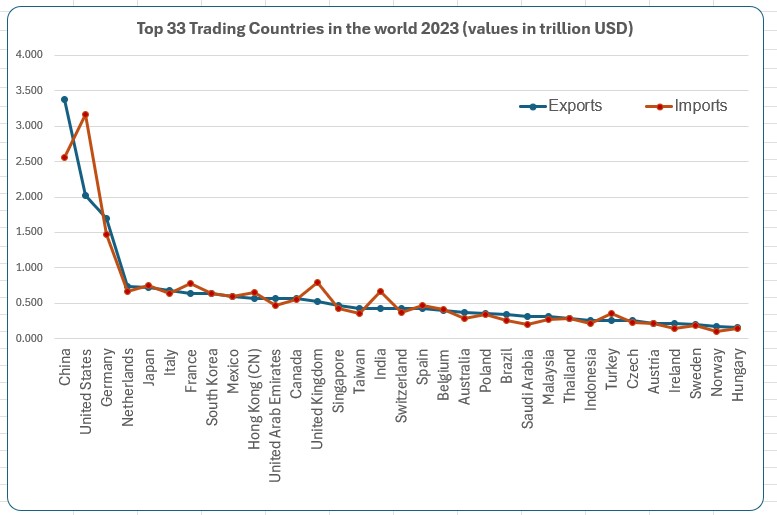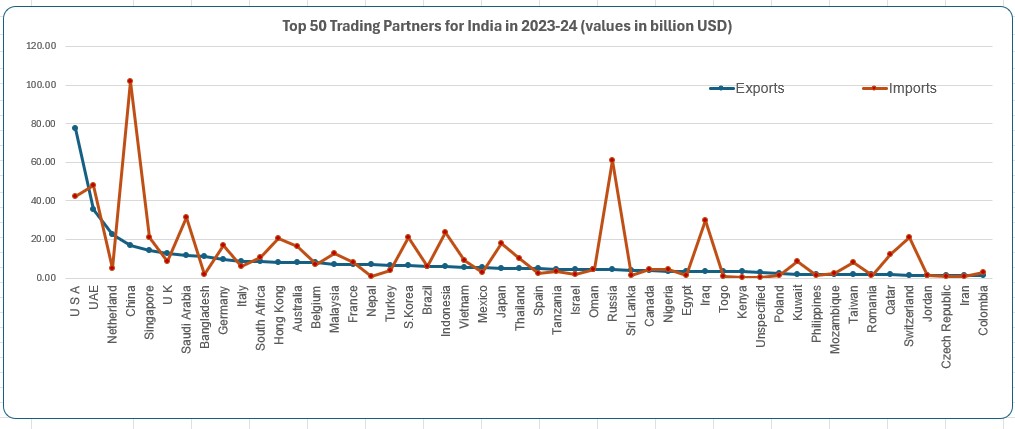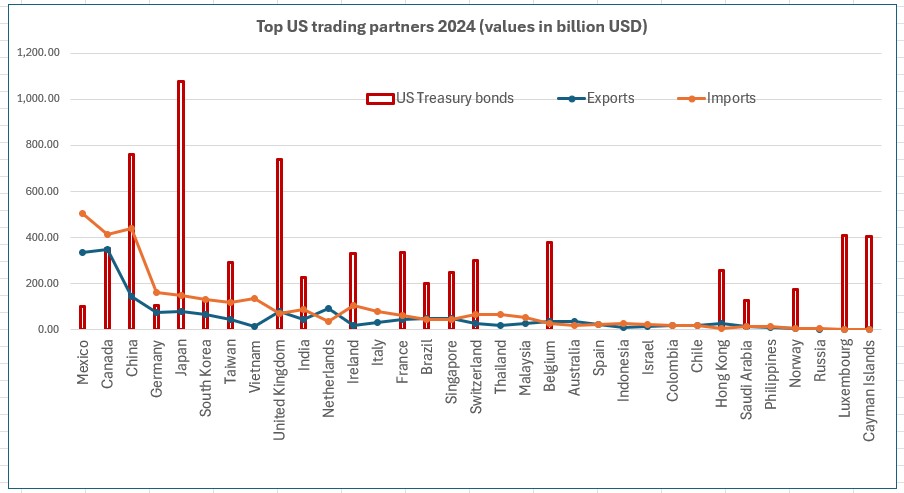Globalization is about interdependence of the world's nations, economies, people and cultures. It is about trade in goods and services, technology, and flows of investment, people, and information. This has been there for over many centuries. Now with high speed transport, it is increasing rapidly every year.
The world consumes USD 100 trillion USD annually.
Gross domestic product: 106.2 trillion USD (2023)
Global Manufacturing Output estimated to be more than16 trillion USD in 2023.
The global debt has also increased and now exceeds USD 100 trillion.
Sources include: World Bank
Global Research
Research should be Global - Results Available to every one and shared by every one.
Knowledge is Universal and have no borders.
Production should be as much local as possible
Why Research should be Global?
- Global knowledge should be available to everyone, not just to the small group of people
- Many research topics are cross disciplines and beyond international borders. Can avoid duplication.
- Many research and development projects, require huge resources (material, manpower etc..), too much for any one country.
- International collaborations help to think more broadly. Can gather skills and knowledge from people working in similar areas world-wide
- Can build internationally competitive teams and research groups, and also gain a greater audience and market for their research.
- Network of contacts is potentially the best source of international opportunities. Adopting a global outlook is also highly beneficial for research careers. Make connections and seize opportunities
- One need to be willing and able to travel and live in a foreign culture for extended periods. One should cope with diversity
- International codes of conduct are important.
What is innovation? Technological breakthroughs
We all come across AI breakthroughs, by innovative organizations with small budet. Innovation needs skills, courage to do things differently, try out things which will work in long terms after developments. Just large budget, rich companies, qualified professionals can not result in innovative goods/services. Big companies may not be necessarily innovative. They may be business success stories, Not technological power house
No race or country is exceptional and there is nothing makes you better than the remaining humans just because you belong to certain race or country.
Innovative people are everywhere. In some places, they are able to popularize their innovations. (Right person in right place at Right time)
For many years, all people (many civilizations or cultures or countries) know about power of steam and effect of boiling water. Revered as Gods or devils.
One day, a person showed that the power can be used to run the engine, with a cylinder and piston. First steam engine could not compete with people and animals. Many people struggled and developed it further. That is the birth of Industrial age and powered vehicles for transport.
Some felt that above is a waste of time, when we have people and animals to do the job.
Others spread conspiracy theories, telling it is work of devil and dangerous for man kind. More people have died by animal vehicle accident, than trains.
When I was a small boy, people of wisdom, used to tell me that train travel is wrong and use animal or human power.
Like steam engine, there are many innovations or breakthroughs like building temples or monuments, dams, canals etc. Many innovative ideas are killed and people have to reinvent it after some time. Let us thanks all innovators, who have improved our living
Global Trade
Global trade, also known as international trade, is simply the import and export of goods and services across international boundaries. Countries make trade agreements, regarding the terms of trade between them—tariffs, quotas, restrictions on imports and exports, intellectual property rights, and investment protection. Still they get into trade wars, one blaming the other.
In 2023, the world merchandise exports exceeded USD 20 trillion, while imports was USD 20 trillion (according to external trade statistics of 135 countries). Considering other forms of trade going on without getting reported, total trade will be 100 trillion USD [Source: 2023 Data from trendeconomy.com]
Ideal situation for a country is, when its imports is equal to exports. Imports can be reduced, by increasing local production and reducing wastes and overconsumption.
The integration of global technology with local production can drive sustainable economic growth, benefiting all.

India Trade Case Study:
In FY2023-24, India imported in 678.21 billions USD, more than 437.07 exports billions USD. Total trade value was 1.12 trillion USD. Like all countries, India imports more from certain countries. The top 50 Trading Partners for India in 2023-24 are presented in the chart below:

[Department Of Commerce, tradestat.commerce.gov.in]
US Trade Case Study:
US imported 3.27 trillion USD worth of goods, 1.21 trillion USD, more than 2,06 trillion USD exports.
U.S. imports of goods and services reached USD 4.11 trillion in 2024, more than USD 3.19 trillion exports. Though US had services surplus of USD 293 billion in 2024, net trade deficit was USD 918 billion. Trade deficit is increasing every year.
US Treasury bonds are a type of debt security, meaning the government is borrowing money from investors. As on January 2025 Foreigners or other governments hold USD 8.53 trillion Treasury bonds or lending money to the U.S. government. [ticdata.treasury.gov]
The foreign direct investment in the United States was USD 5.39 trillion at the end of 2023. [Bureau of Economic Analysis - bea.gov]

Tariff - Taxes - Free Trade
A tariff is a customs duty (tax) imposed by the governments of most of the countries on imports. Rarely on exports of goods, to prevent exporting essential items. Revenue raised by tariffs could help treasury.
Countries use tariffs to boost production at home by making foreign goods more expensive. Ancient Greece (Athen) enforced a system of levies to raise taxes for the Athenian government. The Embargo Act of 1807 led to new, emerging US domestic industries across and marked the manufacturing age in the United States.
One 2021 study found that across 151 countries over the period 1963–2014, "tariff increases are associated with persistent, economically and statistically significant declines in domestic output and productivity. Tariffs can be a political issue prior to an election, affecting election results.
For economic efficiency, free trade is often the best policy. Effects of import tariff, hurts domestic consumers more than domestic producers.
Global Production
Globalisation is a process by which countries of the world benefit in several ways. Three main benefits or advantages derived from globalisation are in countries being able to procure the best and most efficient technologies for their production processes, being able to develop markets for their products and services across the globe and outsourcing jobs to countries where costs are low and the manpower cheaper than in their own country. Leveraging on expertise and economic advantages, countries that have globalised are today economically ahead of those that have not opened up their economy.
A well planned production function will lead to good quality products, higher rate of production and lower cost.
One of the main reasons for opening a production facility in another country is the reduction in manufacturing costs. Labor is often one of the biggest manufacturing costs for rich countries. So, Rich countries invest in less developed countries.
Top ten manufacturing countries
Traditionally, Production was local, importing only goods and raw materials not available locally. Preferance is for local production. Now it is changing. World manufacturing output for 2023 was 16 trillion USD. Many countries make less than they consume. The world’s top ten manufacturing countries by percentage of manufacturing output are:
China – 31.6%
United States – 15.9%
Japan – 6.5%
Germany – 4.8%
India – 2.9%
South Korea – 2.7%
Russia – 1.8%
Italy – 1.8%
Mexico – 1.7%
France – 1.6%
China has pushed the country to compete with others on world class manufacturing and new technology. Make in India, launched by the Government of India in 2014 to encourage companies to manufacture their products in India.
Issues in Global Production
- Stability Issues such as governmental policies, political instability, revolution or terrorism/organized crime. Many developing countries have fairly unstable or volatile political landscapes that can change quickly.
- When a new government takes over, it might make it harder to do business in that country.
Outsourcing your production can lead to increased management expenses
- Despite dramatic advances in information and transportation technology, a factory located thousands of miles away still poses huge logistical challenges.
- When you bring in something form abroad to sell in the local market, you are exposed to currency rate fluctuations.
Outsourcing is a controversial issue.
Local Production
Traditionally, Production was local, importing only goods and raw materials not available locally. Preferance is for local production.
- Small-scale local production helps to eliminate the waste of unneeded products made to adhere to overseas minimums, reduce emissions and energy usage. Controlling the development of the product first-hand enables greater quality control and helps to reduce waste and overproduction, ensuring the item remains sellable.
- Sourcing your products and materials locally has benefits in all three areas.
- Planet: Buying from local vendors and manufacturers cuts down on fuel emissions because it takes less fuel to transport goods than it would to transport them across the country or across continents.
- Eating local means more money stays within your community. Every dollar spent generates twice as much income for the local economy.
- Local produce is fresher and tastes better because it is usually sold within 24 hours of being picked. Some local producers also use organic or higher quality materials. This is one of the main reasons locally grown food and goods are generally viewed as being of better quality.
- Supports the Local Economy. Money is kept local and makes the community wealthier.
- Better Community Health and Safer Food
- Reduces Use of Fossil Fuels in transporting over large distances
- Better Economic Use of Land, instead of building huge structure and parking
Why Production became global
- Farmers and businesses who produce in smaller quantities typically incur higher costs associated with growing, producing and distributing their goods.
- Typically find a smaller selection of goods. For example, local foods can only be grown during certain times of the year. Local food also tends to spoil faster because it isn’t typically treated with preservatives. A lot of local farmers report it is more difficult for them to sell their produce based on looks.
- As a consumer, there can be a lot less choice. You may also find there is a waiting period to get the item you want, or it may not be available at all locally.
Global mobility
Global mobility of professionals is crucial for businesses to tap into a wider talent pool, foster innovation, and enhance competitiveness. So, Global organizations have to relocate professionals to their world wide offices, to ensure they have the right skills and talents where they need them. Global mobility can present challenges related to immigration, taxes, pay, and other logistical issues.
For Businesses:
1 Global mobility allows companies to recruit and retain top talent from around the world, regardless of location;
2 Exposure to different cultures and perspectives can spark creativity and lead to innovative solutions;
3 Global mobility can facilitate the transfer of specialized skills and knowledge across different locations, optimizing operations;
4 International assignments provide employees with valuable opportunities for professional and personal growth, enhancing their skills and experience;
5 Global mobility can help businesses become more resilient by diversifying their workforce and operations across different regions. Also facilitate 24/7 operations by leveraging talent in different time zones;
Some are based on the discussion points, the author had during APEC lunch time gossip

Administrator:NARA is a Consultant by profession and an Engineer by qualification. Nara holds an Engineering Masters degree and have worked 25 years for leading organizations.
Now working part time on country/technology research projects and Maintaining community Web sites.
Spending more time to pursue his interests on studying: ancient scriptures; maths & astronomy; physics; philosophy; history & culture and so on.



![]()